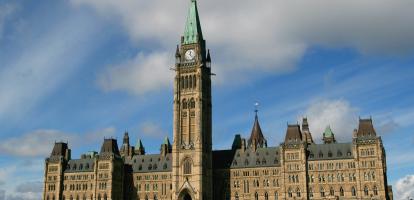Wednesday’s inflation report from Statistics Canada showed that the consumer price index was up 7.7 per cent year-over-year in May. That’s alarming for two reasons. The obvious one: our money’s purchasing power is falling faster than at any time since the early 1980s. The other reason will take time to sink in: We are headed for a recession.
Getting inflation back to its 2-per-cent target would inevitably have been a challenge for the Bank of Canada. The fiscal and monetary stimulus at the beginning of the COVID-19 pandemic went on too long, and now it has combined with pent-up saving by households who could not travel, eat out or enjoy in-person entertainment for two years to unleash a torrent of spending. Demand is above the economy’s capacity to produce; getting inflation down will require demand to fall below the economy’s capacity to produce.
If the bank knew how far above capacity demand is now, and how far below capacity demand will need to go, its chances of avoiding a slump on the way would improve. But inflation has been very close to 2 per cent for a quarter-century. The bank has no recent evidence to help it navigate this. The chances of tightening too much are serious. So are the chances of tightening too little, and needing to get even tighter later.
That second risk is not abstract. In fact, it is happening, as the CPI’s 7.7-per-cent surge shows so starkly. The Bank of Canada kept short-term interest rates low, and continued buying bonds – quantitative easing – longer than it should have. Instead of getting out in front of the issue before inflation built momentum, the bank is now chasing it. Earlier this year, people talked about its overnight rate topping out below 3 per cent; now, a peak twice that high is easy to imagine. That will pinch indebted households, businesses and governments hard. Another reason to expect a recession.
The third and most disturbing reason this towering inflation number prefigures a recession is what it tells us about our economy’s capacity to produce. Inflation close to 8 per cent confirms not just that demand is above capacity – it also suggests that capacity has flatlined. More people are working than ever before, but business investment has been so low that capital per worker is falling. Not surprisingly, productivity is also falling. The unemployment rate is already at a record low, and in round numbers, my guess for the likeliest growth rate for productive capacity over the next year or two is zero.
Low or zero growth of capacity makes the bank’s task of reducing inflation without a slump fundamentally harder. Although we do not know how big the gap between demand and capacity is now, or how far the other way it would need to go to get inflation down, a few numbers illustrate the problem. Suppose demand was 2 per cent above capacity now, and getting inflation down required it to be 2 per cent below capacity a year from now. If capacity were growing at 4 per cent annually, the bank could do that just by keeping demand flat for a year. But if capacity is not growing, the bank would need to squeeze demand down 4 per cent over the year. That’s a recession.
Economic forecasting is notoriously unreliable, so it would be rash to say a recession is 100-per-cent certain. Russia might withdraw from Ukraine; supply chains might unsnarl; COVID-19 might recede for good, and its human and economic damage might heal. Canadian governments might ease the pressure of demand on capacity by spending and borrowing less, or encouraging investors more. We may even discover that the interest-rate increases and quantitative tightening the Bank of Canada and other central banks are already undertaking will have more effect than expected, easing the task ahead.
We would need a lot of good luck on those and other fronts, however, to mitigate the risk made so plain by 7.7-per-cent inflation. The path to lower inflation for the Bank of Canada was already uncertain. Inflation’s continued rise has left the bank behind where it needs to be. And, especially with investment and productivity nowhere on the agenda in Ottawa, growth in productive capacity will not solve the problem.
If we are smart, and lucky, we can look forward to better economic times in the late 2020s. Meanwhile, though, the next couple of years look rough. Inflation of 7.7 per cent is not just bad on its face – it also means Canadians should prepare for a recession.
William Robson is the CEO of the C.D. Howe Institute.
Published in the Globe and Mail





